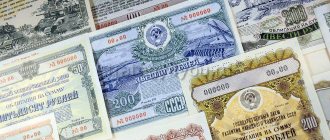Share this useful page:
The US economy is the leading among all modern states. The GDP of this country for 2022 amounted to 19284.99 billion dollars. China, for example, is in second place with $12263.43 billion. State The US debt at the beginning of 2022 is $20.6 trillion. This country is the largest issuer of bonds. These securities are issued by a federal, state, or local government agency for financing purposes.
Where can I see a chart of 10-year and 30-year bonds?
The yield on 10-year US Treasury bonds is one of the most important indicators of the state of the stock market around the world. In recent years, it has fluctuated between 2-3% per annum, and when it goes beyond this, big news happens. To see what their current profitability is, it is best to use interactive charts on a special website for those who are seriously involved in analyzing financial indicators.
So, to view the graph, you need:
- Go to the special tradingview website.
- In the search column at the top of the page, enter the paper code US10Y.
- Go to the page and watch the interactive chart.
To find a chart of 30-year US government bond yields, search for US30Y.
Investor reviews
On tradingview, I selected two popular bond investors and read their comments on the US debt market:
- Infa writes about 10-year loans that we make a contribution for a paltry 1.5%, although the debt is non-repayable, we need to wait for default. Why only about 10-year-olds, I thought, and not, say, 2-year-olds, it’s unclear.
- Klon27 writes that the purchase is profitable because rates will rise, this will attract speculators, since the risks are minimal.
A clear example of the polarity of opinions of domestic investors about US bonds.
Russian Finance Minister Anton Siluanov, when asked by a journalist what to do if the United States suddenly does not return the money for the bonds purchased by Russia, replied that this is impossible, because it will be regarded by the whole world as financial terrorism.
The United States pays even its geopolitical opponents, namely Russia and China, regularly.
Quotes
On the same website you can also see quotes for US bonds, i.e. their market value. To do this, you need to go to the tradingview website and enter US10 and select US GOVERNMENT BONDS 10 YR .
An interactive graph will appear. For 30-year securities, the code is US30 .
The bond price is indicated as a percentage of the par value. The par value of American ten-year and thirty-year debt securities is $1,000. Then, for example, if the market price is 101%, then you can buy one bond for $1010, at a price of 99% - for $990.
Where to see US bond yields
There are several sites where it is convenient to look at the dynamics of yields on US debt securities, both in the commercial sector and in the government sector.
I will give two sources:
- investing.com;
- tradingview.com.
Tradingview features are wider, but to take advantage of them, you will have to register. Investing is good because it is easy to download historical data, with which you can make models in Excel.
Where does the income come from?
US bond yields are affected by the same factors as any other bond. Government securities are a financial instrument with a fixed income, which means that their yield is inversely proportional to their market value. Therefore, three key parameters can be distinguished:
- The market price of a bond is the cost to purchase the security by an investor. The income that the owner of the bond will receive depends on the price at which he bought it. Regarding US bonds, there is a stable trend: if the purchase price is equal to the face value, then the income on such a bond will coincide with its interest rate. The higher the price, the lower its yield, and in this case it is necessary to take into account the remaining life of the bond and the coupon income on it.
- Coupon income is the quarterly or annual interest rate payments that the investor will receive. A direct measure of the profit from owning a bond. For US bonds, this indicator varies depending on the type of security.
- Bond maturity. This indicator shows how many times dividends will be paid.
IMPORTANT! Interest payments on bonds are mandatory, which makes them more attractive to investors.
We have a separate article that answers the question of why Russia invests in US bonds.
Investment strategy and management
The FXFA ETF buys bonds directly.
BTIF VTBH is a fund of funds. It is based on the foreign ETF IShares $ High Yield Corp Bond, shares of which VTB Management resells on the Russian stock exchange.
FXFA adheres to an active management strategy: it tries to buy and sell shares according to some algorithm. There are both pros and cons to this. It's possible to earn higher returns, but there's also the potential to lose a lot of profit if things go wrong.
VTBH is a completely passive investment. The securities are held until maturity.
Treasury or government bonds
Initially, you should familiarize yourself with the term “treasuries” . These are US government debt obligations backed by the issuance of securities. These papers must be confirmed by the American government. These may include Treasury bills, Treasury notes, and Treasury bonds.
Treasury bonds are securities issued directly by the US government and are considered one of the most reliable instruments in the world. These bonds are sold on the primary market through auctions, and they can also be purchased on the secondary market through a broker.
These securities are highly liquid, because there is an opportunity to sell them at any time. They serve as an indicator of the state of the global stock market and allow us to determine the ratio of demand to risk. Funds received from the sale of Treasury bonds are a US federal loan.
The yield on Treasury bonds is directly affected by the US Federal Reserve rate, which increases the yield of these securities, and vice versa. An increase in the rate leads to a decrease in inflation (i.e., your deposit depreciates less), which is an important point, given that all transactions with bonds, including interest payments, are made only in dollars.
IMPORTANT! Although the credit rating of these bonds is equal to or close to the maximum AAA (the most reliable), at the same time they are not secured by any material collateral. They rely on the US reputation as a world leader and on faith in the country's solvency. Also, their high reliability rating promises low income. Therefore, this method of investing money is more of a saving method than one designed for profit.
In early May 2022, following Donald Trump's announcement that the United States would withdraw from the Iran nuclear deal, US Treasury bond yields exceeded 3%. Against the backdrop of this event, the dollar exchange rate and oil prices rose. Experts believe that the growth in the yield of these securities will continue to grow, and by the end of 2022 it will be 3.15%. Before this, there was a stable, half-century downward trend in interest rates. For example, at the beginning of 2014 the peak was 3.4%, after which the figures began to decline.
Why buy US Treasury bonds, what is the yield on 10-year and other bonds, is it worth investing in Treasuries or Eurobonds, watch in this video.
How much debt does America have?
During the presidency of Donald Trump, the US national debt has grown by $7 trillion and has already reached about $27 trillion, Bloomberg estimates (the total national debt includes not only market instruments such as Treasuries, but also so-called domestic obligations, usually issued in the form of Government Account Series or GAS - Ed.
).
By the end of this year, the United States national debt will be almost equal to the volume of annual national GDP. This forecast is contained in a report by the US Congressional Budget Office published in September. By comparison, it accounted for 79% of US GDP at the end of 2022, and 35% in 2007.
It is obvious that the current level of debt for the United States is not the limit: due to the costs associated with measures to restore the American economy after the coronavirus pandemic, government debt will continue to grow.
Source: Expert RA
According to forecasts from the Budget Office, the size of the US national debt in 2021 will exceed 100% of US GDP, in 2023 it can reach 107% of national GDP, and by 2030 it could reach 109% of GDP. The previous such peak was recorded in 1946 in connection with large deficits of the US federal budget caused by the Second World War, experts from the Congressional apparatus indicate.
“When you are at war, and we are at war with the coronavirus, you spend as much as it takes to get rid of it. That’s exactly what we did,” US Treasury Secretary Steven Mnuchin said at the end of October during an online conversation organized by the Milken Institute. “I think deficits matter in the long run.” And we will have to deal with the US debt in the next ten years.
“There is no ceiling on public debt in relation to GDP; it makes sense to look at the level of interest burden,” says Anton Prokudin, leading methodologist at the Expert RA rating agency.
Source: Expert RA
- Thus, an acceptable debt burden is considered to be up to 60% of GDP, but low interest rates, even with a debt of 105% of GDP, led to interest expenses of about 10% of budget revenues, which is quite a rising level. Countries with interest costs exceeding 25% of budget revenues fell into default at some point in the crisis. And herein lies the main problem: as long as inflation is low, the Fed can keep rates low, and this leads to acceptable debt servicing costs. But imagine a situation where the economy is growing and inflation is stable at 3% or more. Raising the Fed rate even to 3–4% will make this pyramid vulnerable to external shock, because interest expenses to GDP will gradually increase to 20–27% of federal budget revenues with a debt to GDP ratio of 120%.
According to Prokudin, if the US government continues to pursue a policy of constant budget deficit, then the debt to GDP may grow even more and the end of the American public debt pyramid will not be so far away. A countercyclical budget policy (surplus during economic growth, deficit during a crisis) could stabilize the situation and at least not bring the sad outcome closer.
— Between 1945 and 1980, the US economy grew rapidly and the budget was usually in surplus, so the debt burden was reduced from 119% of GDP to 31%. Now the US economy cannot have rapid growth, if only because of demographic difficulties, but the reduction of government spending is in the hands of the government, says a representative of Expert RA. — Greece was in a more difficult situation in 2012, but was able to achieve a surplus after losing part of the economy. In the US, the situation is much easier; they can make do with fewer losses in order to achieve a surplus.
“The debt ceiling is a very debatable issue, after all, if there is a buyer in the form of the Federal Reserve, then the debt ceiling can be very far,” says Yegor Susin. — Of course, this will undermine confidence in the dollar in the future, but this is not such a quick process. In the current situation, however, it is worth considering the fact that the US Treasury borrows mainly with short-term bills (+$2.6 trillion) and only partly with longer-term securities ($1 trillion). The Fed, on the contrary, buys long-term bonds (+$2.1 trillion). This has two effects at once - distortion of the yield curve (long-term rates are lower) and squeezing money into riskier assets with high duration.
As the debt structure normalizes, the US Treasury will have to issue more securities, and the Fed will have to buy more. This also sharply limits the Fed's ability to control inflation, but at the moment the regulator is not particularly worried about this, since the economy has been generating inflation below target for the last 10 years.
— The Fed’s new strategy assumes the possibility of higher inflation in order to compensate for this “shortfall.” In fact, this means that the Fed will chronically lag behind inflation if an inflationary background develops,” Susin predicts. — Inflation is still subdued. Partly because objectively there is no shortage of production capacity in the world, partly because money simply does not reach the middle class. Low inflation is partly due to the structure of consumption, where less than 1/3 is goods, and the consumption of a number of services (as the last crisis showed) can be reduced. The excess money supply is “utilized” by the financial market, where the value of assets increases. This does not mean that inflation cannot exist in principle, but it does mean that its triggers will most likely be in a non-economic plane and then the Fed will not be able to respond adequately. In the medium term, current policies are likely to lead to a weakening dollar, which will also increase the risks of increased volatility as leverage in the financial sector increases.
Municipal
Securities issued by city and local governments in the form of loans against municipal property to finance projects. The government of states and large cities issues such bonds.
The yield on these bonds is believed to be 1-2% higher than Treasury yields. They also have a high reliability rating. Despite the recent recession, the US has maintained better employment than, for example, Europe. It is this factor that shows the creditworthiness of municipalities.
What it is
Treasuries are American treasury bonds for investment. Such securities are issued by the US Treasury through the Bureau of the Public Debt.
The money received for securities is spent by the government of the United States of America for the following purposes:
- repayment of arrears on wages and social benefits;
- investment in the development of the social sphere, defense industry, education and other areas;
- maintenance of the apparatus of officials;
- implementation of large projects;
- loan payments.
Corporate US market
A corporate bond is a bond issued by corporations (legal entities) to finance their activities. The purposes of the collected funds can be varied: from modernizing production to refinancing previous debt.
The security of this security lies in the fact that the issuer who issued it retains complete control over the company, which provides additional confidence that interest and principal will be repaid at maturity.
Several obvious advantages of corporate bonds:
- some are almost as safe as bank deposits;
- return on interest payments and discounts may significantly exceed income on deposits;
- the high liquidity of these assets allows them to be sold on the secondary market at any time;
- predictability of interest income and terms.
On May 16, 2022, Federal Farm Credit Banks issued 3.04% 4-year bonds. The company has the highest reliability rating because... is federal.
And not so long ago, Apple issued 30-year bonds with a yield of 4%. These bonds are considered riskier because... placed for a long period of time and there is no confidence that nothing will happen to the company during this time.
Main holder
The main holders of assets are the Central banks of the world's leading powers. China bought the most securities. It is followed by Japan and Brazil. Russia is getting rid of assets due to the introduction of US sanctions against the country. Currently, the Central Bank is in charge of treasury bonds worth about 20 billion US dollars. The number of securities decreased by almost 4 times compared to 2016.
In addition to Central Banks, assets are being purchased by:
- pension and mutual funds;
- banks;
- investors, the bulk of whom are Americans.
The US Federal Reserve also purchases bonds. The Federal Reserve Fund purchases securities to “mitigate” the effects of the global crisis. The money received from deposit payments stimulates economic development and compensates for inflation.
How can a Russian buy?
Investments in US bonds are not at all highly profitable, but they are very liquid and reliable. In order to be able to buy them, you first need to open a brokerage account. At the same time, the service of buying bonds of another country is a completely non-trivial task, which is why most Russian brokers do not do this.
When choosing a broker that provides access to Western financial markets, it is necessary that he has the appropriate license and FCA regulation. Moreover, a serious broker will not be registered in the Cayman Islands, Cyprus or Russia. Although we have several large brokers (FINAM, BCS), it will be difficult to work with them in Western markets due to weak legal regulation and a long chain of branches from Russia to the USA.
Therefore, it is better to consider Western companies, for example, Interactive Brokers (IB) - this is one of the most popular and largest US brokers, which provides access to global financial markets.
1. Why do you need a broker:
- Maintaining records of funds transferred by the investor;
- Without it, it is impossible to register on the exchange and receive special codes;
- Provides information on the progress of trading;
- Sells and buys what you think is necessary;
- Makes settlements on transactions - transfers money and securities;
- Provides all information on cash flows and transactions in the form of reports;
- Issues the necessary certificates: on the purchase of securities, on the payment of taxes;
- Withholds and transfers taxes on profits and dividends to the state.
2. We conclude an agreement for brokerage and depository services. These services are required and go together.
3. The broker opens an account in his accounting system and registers it on the exchange. After you have received a notification about opening an account, you can transfer money to the broker.
After these short procedures, we install the software (it will be provided by the broker) - a trading terminal for working via the Internet. But for some establishments, trading can take place through the website.
IMPORTANT! Before making real trades, practice on a demo account. Its peculiarity is that all movements on the stock exchange are displayed in real time, and the money there is “training”. If you make a mistake on such an account, you will not incur losses.
The broker will provide reports for review at the end of each trading day, if transactions have been made.
Another important point is withdrawing money from a brokerage account. You can withdraw them all, but not immediately after completing the transaction, because... The exchange takes 2-3 days to transfer funds.
Alternatives
There are alternatives to American bonds. I think there is no need to go far: OFZ is the best option.
Russian securities yield an average of 6%, which is 4.5% higher than American ones. Russia, of course, is less reliable than the United States, but it is stable and has been paying regularly for the last 20 years. According to the Central Bank of the Russian Federation, the share of non-residents in OFZs as of January 31, 2020 was 32.2%. Foreign investors trust the Russian government.










